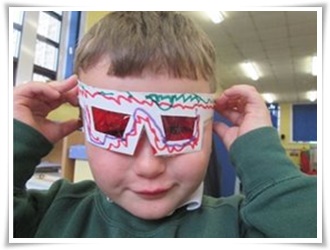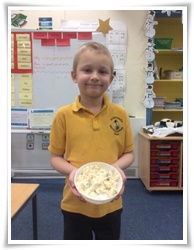Design and Technology at St Michael's
The Curriculum Leader for this subject is Miss Routledge


Intent
Design and Technology is an inspiring, rigorous and practical subject that encourages children to learn to think and intervene creatively to solve problems, both as individuals and as members of a team.
At St. Michael’s, we encourage children to use their creativity and imagination, to design and make products that solve real and relevant problems within a variety of contexts. We also aim to make links to designs and designers throughout history, providing opportunities for our children to critically reflect upon and evaluate their designs.
We aim to, wherever possible, link work to other disciplines such as maths, science, computing and art. This gives the learning purpose and relevance to the children.
Implementation
Through a variety of creative and practical activities, we teach the knowledge, understanding and skills needed to engage in an interactive process of designing and making.
When designing and making, our teachers plan and deliver agreed lessons, to ensure our pupils are familiar with the design cycle:
- Design – use research and develop design criteria to design for a purpose and communicate their ideas through a range of mediums
- Make – use a wider range of tools and equipment with accuracy and use a wider range of materials and components according to their qualities
- Evaluate – evaluate their ideas and products against their own design criteria and consider the views of others to improve their work
Through this process, the aim is to develop pupils’ technical knowledge and vocabulary in relation to structural design, mechanical and electrical systems, the integration of technology and food production and nutrition. In addition, our school aims for these tasks to be completed collaboratively.
Impact
We use a range of teacher assessment to ensure the following:
- Children develop the creative, technical and practical expertise needed to perform everyday tasks confidently
- They build and apply a repertoire of knowledge, understanding and skills in order to design and make high-quality prototypes and products for a wide range of users and critique, evaluate and test their ideas and products and the work of others
- Children understand and apply the principles of nutrition and learn how to cook. Children will design and make a range of products
- Develop a critical understanding of its impact on daily life and the wider world
D and T in the Early Years
In the Early Years Foundation Stage, design and technology forms part of the learning children acquire under the ‘Understanding the World' branch of the Foundation Stage curriculum, which also covers geography, history, Computing, and science.
Your child will learn through first-hand experiences. They will be encouraged to explore, observe, solve problems, think critically, make decisions and to talk about why they have made their decisions. Here are some of the typical learning experiences your child will have:
Constructing: Learning to construct with a purpose in mind, some children use scissors, glue, string and a hole punch to make a bag to store travel brochures they collected during a field trip.

Structure and joins: Following a visit to our local high street, some children make a church tower out of small wooden bricks.
Using a range of tools: Through this, your child will learn about planning and adapting initial ideas to make them better. For example, a child might choose to use scissors, a stapler, elastic bands and glue to join bits together to make a toy vehicle. But they might then modify their initial idea by using masking tape.

Cooking techniques: Some children take turns stirring the mixture for a cake and then watch with fascination as it rises while cooking. They will practise stirring, mixing, pouring and blending ingredients during cookery activities.

Exploration: Children will dismantle things and learn about how everyday objects work. For example, a child might dismantle a pepper grinder and discover how it is put together and the materials different parts are made of.
Discussion: Your child will be given opportunities to discuss reasons that make activities safe or unsafe, for example hygiene, electrical awareness, and appropriate use of senses when tasting different flavourings. They will also learn to record their experiences by, for example, drawing, writing and making a tape or model.

What does Design & Technology look like in Early Years?
Design & Technology Progression
KS1 Long Term Design and Technology Planning 2023–2025
Design & Technology Policy
